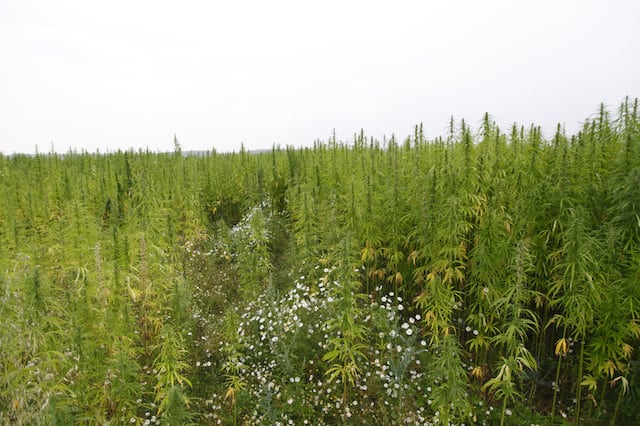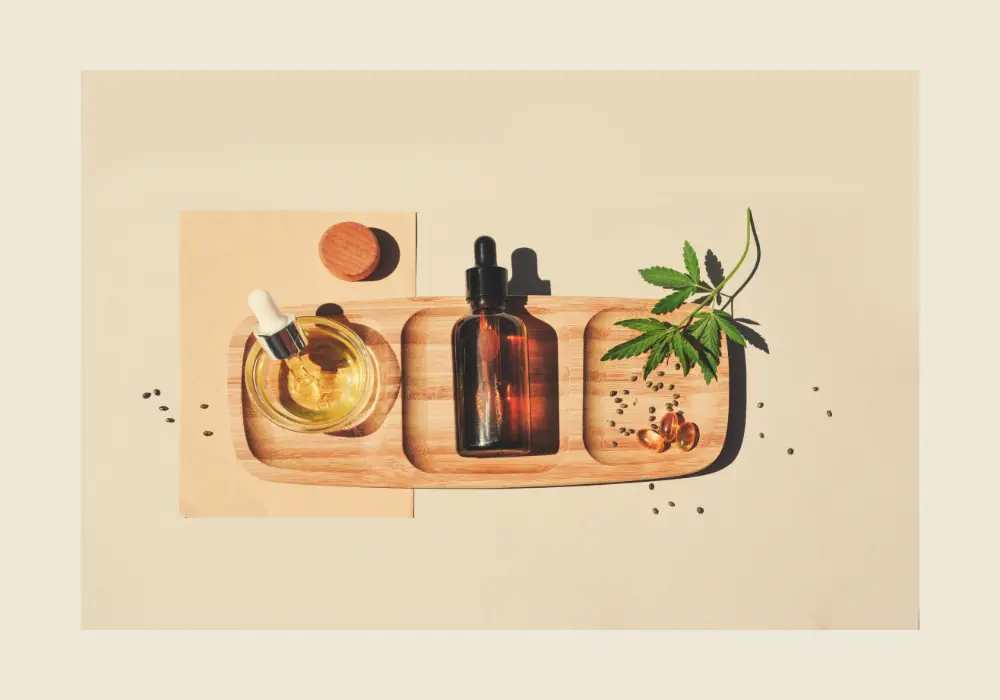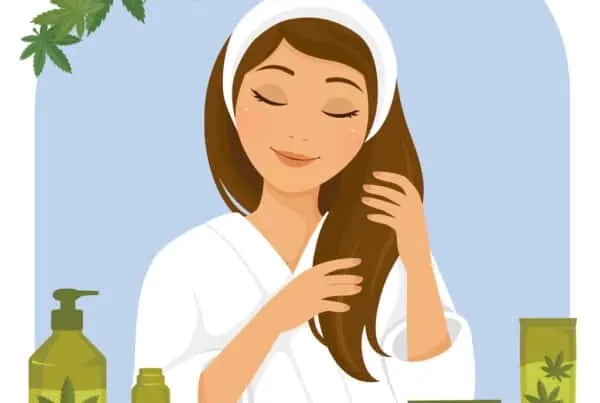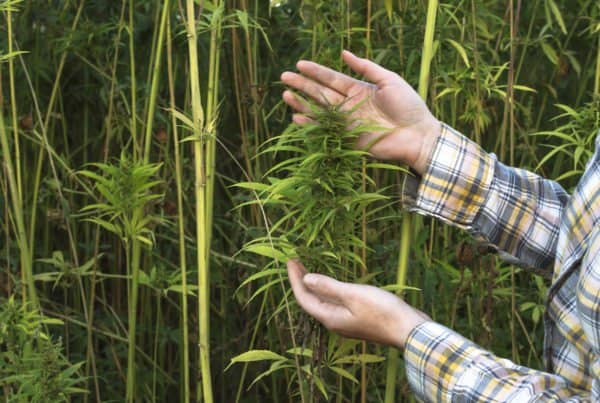TABLE OF CONTENTS
Wondering how to start a hemp farm? It’s the perfect time to enter the cannabis industry. Driven by growing demand for CBD and textile fibers, industrial hemp is expected to grow nearly 16% annually until 2028.
But first, is it legal to grow industrial hemp?
Yes. The 2018 farm act, signed into law by former President Donald Trump, legalized the large-scale production of industrial hemp in the United States. This means it's okay to grow the plant for commercial purposes.
However, before you begin, you'll need a license that gives you the right to do so. While the permit covers cannabis as well, it will only do so if you're in a state that permits marijuana use for both medicinal and recreational purposes. You may want to consult a lawyer just to be safe.
Choose a Hemp Business Model
Your business model is like a proof of concept, a documented plan on making your farm succeed.
It is much better to identify problems while at the planning phase of your hemp farm than later on after you've made significant investments.
Your business model will need to cover at least these three critical areas:
- A PEST (Political, Economic, Social, Technological) or SWOT (Strengths, Weaknesses, Opportunities, and Threats) Analysis
- An overview of the local hemp market
- Your sales strategy and operational procedures.
How to Farm Hemp
Choose which hemp product you want to grow.
Besides being a rich source of CBD, hemp may be used to make plastics, textiles, paper, soap, and many others. So, in most cases, the hemp variety you'll cultivate will depend on what your buyers want.
That said, there's no need to worry if, for example, you cultivate hemp for CBD oil instead of paper. There are willing buyers for that, too; you just have to know where to find them.
CBD oil products seem to be the most popular right now due to their perceived health benefits. You will definitely get good returns if you can find buyers to process your hemp for that purpose.
What Kind of Soil Does Hemp Grow Best In?
Hemp will grow in various soil types. It grows best in fertile loams (loose, deep soil types with lots of organic matter), with a pH between 6.0 and 7.5.
Hemp won’t do well in wet soils, as they restrict shoot and root growth, and reduce fiber quality. Wet soils may also lead to uneven plant heights, which can complicate the harvest process. Clay soils, in particular, present excessive soil wetness and difficulties.
You’ll want to test your soil several months before planting, then apply fertilizers and lime to achieve the desired ph.
The Best Climate for Hemp
Hemp thrives in a temperate climate, humid atmospheric conditions, and at least 25-30 inches of rain every year.
Seedbed Preparation and Seeding
Preparing for hemp is a lot like other spring crops, like small grains. Hemp for fiber is seeded during springtime on adequately-prepared soils. Soil preparation depends on the rotation schemes and cropping systems you have in use.
Hemp needs a firm seedbed and adequate soil contact to ensure proper germination.
The best strategy is to follow fall plowing with secondary cultivation to create a firm seedbed devoid of weeds. It seems likely that hemp can grow in no-till and limited-till systems. However, this strategy has not yet received sufficient study.
Furthermore, there are no registered herbicides for the plant, which further complicates using reduced-till farming.
How Tall Does Hemp Get?
Hemp can grow up to a height of 5 meters if it is grown in a temperate climate.
How Long Does it Take to Grow Hemp?
It takes between 10 and 20 weeks for your seeds or clones to mature. The differences in the timeline arise from the fact that different hemp products require different times to mature.
For example, hemp fiber may be harvested after about 2 months, seeds after about 3 months and 20 days, and buds at about 4 months. The time it takes for hemp to mature may also depend on the climate and farming methods used.
How to Harvest Hemp Fields
For most farmers growing hemp on a traditional full-term cycle, the plants should reach maturity between mid-august and early October.
Initially, small hemp farmers could tell whether plants were ready for harvest by studying their trachoma’s (little, mushroom-like protrusions on hemp flowers). When trichomes change color from clear to milky white, the plants are mature enough to harvest.
But, right now, even small farmers must present accurate measurements of the CBD and THC levels in their harvests. Since this method relies entirely on visual signs and doesn't indicate how much CBD of THC a plant may have, it should be avoided.
The best way to determine if hemp plants are ready for harvest is by checking their cannabinoid content. While this may seem expensive, it will more than pay for its cost by helping you (the farmer) harvest the hemp plants at maximum CBD concentrations.
It will also help you avoid legal problems that might arise from non-compliance.
If your hemp plants are meant for CBD extraction, then you may use a combine harvester to cut them down. On the other hand, if you need smokable flowers, your best option is to harvest by hand. It keeps the flowers clean and helps keep the flower's resin trichomes intact.
“
There are over 300,000 jobs in the cannabis industry. CTU trained me for one of them!

Makes $24.50 @ THC +
Can I Grow My Own Hemp Plant?
It depends on where you are in the United States. Hawaii, Montana, Arizona, Rhode Island, Washington state, and Oklahoma only permit cultivation for medical purposes. That means only individuals with a medical marijuana license can grow the plant at home.
Most states that have recreational cannabis permit their residents to grow personal hemp and cannabis provided that they adhere to the relevant cultivation guidelines.
Conclusion on Hemp Farms
Hemp is a great way to enter commercial farming. Besides the fact that it is not water-intensive, it doesn't need many herbicides, fertilizers, or pesticides.
The plant has also enjoyed a dramatic rise in demand because it is a rich source of CBD, so hemp farming will remain an excellent income source for the foreseeable future. To learn how to grow hemp, enroll in Cannabis Training University and earn your marijuana certification online.

Gavin Kushman
Gavin is a worldly adventurer and cannabis connoisseur, embarking on journeys that take him to the far corners of the globe to explore and document the varied effects, flavors, and histories of both renowned and lesser-known strains. From the misty high-altitude farms of the Hindu Kush highlands to the vibrant cannabis cafes of Amsterdam, Gavin's quest for knowledge spans continents. A recognized authority in the cannabis industry, he frequently lends his expertise to leading publications such as Cannabis Training University, where his captivating blog articles chronicle his unique experiences with different cannabis strains.












 Jeff was involved in an accident where he endured a traumatic brain injury. He had a week-long stay in ICU where brain surgeons
Jeff was involved in an accident where he endured a traumatic brain injury. He had a week-long stay in ICU where brain surgeons  100% risk free money back guarantee within 48 hours after purchase if student has not completed any of the courses or exams.
100% risk free money back guarantee within 48 hours after purchase if student has not completed any of the courses or exams.